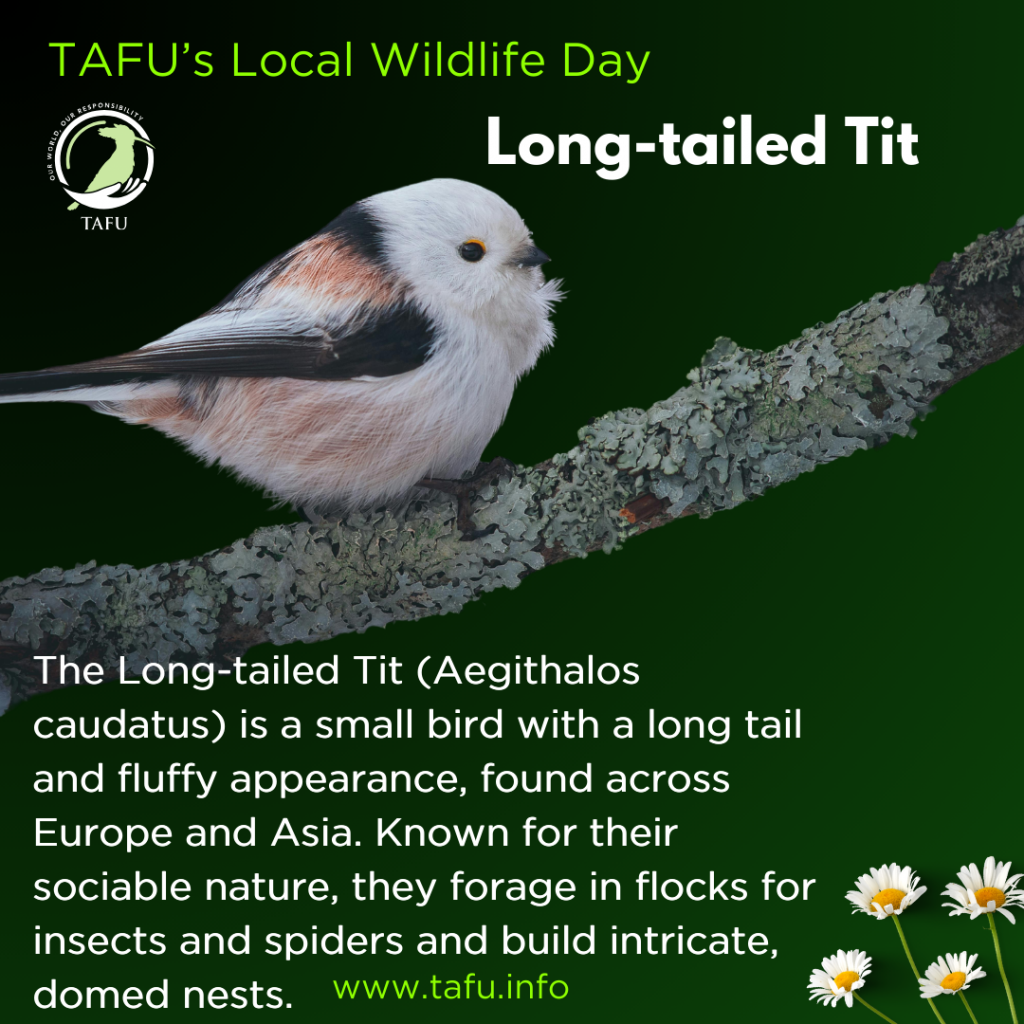Long-tailed Tit
As part of the countdown to TAFU’s Local Wildlife Day on the 11th of July – Species no. 37.
Stay tuned – 6 more days and 6 more species until then!
The Long-tailed Tit (Aegithalos caudatus) is a small passerine bird, measuring about 13-15 cm in length, with its tail accounting for over half of its length. It is easily recognised by its long, black-and-white tail, round body, and fluffy plumage. The bird’s colouration includes a mix of white, pink, and black, giving it a striking and delicate appearance.
Long-tailed Tits are highly sociable and often seen in small, active flocks of about 20 birds that flit through trees and shrubs. These flocks are family groups that remain together throughout the year, even forming larger flocks in the winter for added warmth and protection. Their acrobatic foraging behaviour, which includes hanging upside down to access food, is a common sight in woodlands, gardens, parks, and hedgerows, just as other tits do.
Their diet consists mainly of insects and spiders, which they diligently search for among branches and foliage. During the winter months, they may also eat seeds and other plant material when insects are less available. Their constant movement and distinctive calls make them a lively and engaging presence in their habitats.
Breeding season for the Long-tailed Tit starts in early spring. They are known for their remarkable nests, which are intricately woven domes made from moss, lichen, spider silk, and feathers. These nests are typically well-hidden in dense foliage or brambles. The female lays 6-8 white eggs with reddish-brown speckles, which she incubates for about 12-14 days. Both parents, often with helpers from pairs that have failed to raise their own chicks, feed the chicks, which fledge after about 2 weeks.
Allowing native trees and shrubs to thrive in our green spaces to provide natural foraging opportunities and nesting sites are essential. Avoiding the use of pesticides can ensure a healthy insect population, which is crucial for their diet.

